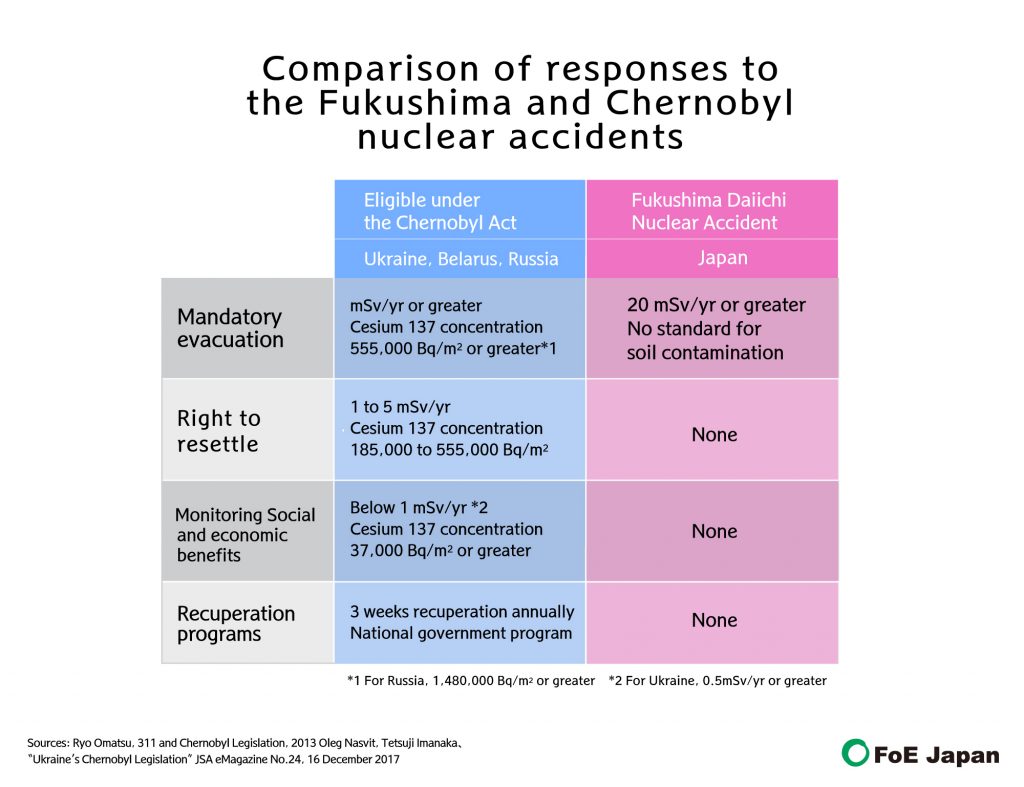
The Japanese response was more lax in some ways even compared to Chernobyl.
So-called “Chernobyl Legislation” enacted in Russia, Ukraine, and Belarus five years after the accident at the Chernobyl nuclear power plant provided mandatory resettlement for people living in areas with an additional exposure dose of 5 mSv per year or a soil contamination level (radioactive cesium concentration) of 555,000 Bq/m2 or greater (for Russia it was 1.48 million Bq/m2 or greater). Areas with an annual exposure dose of 1 to 5 mSv or soil contamination of 185,000 Bq/m2 or greater were able to receive a variety of assistance, including housing and employment. If they continued to live there instead of resettling, they were able to receive support such as medical coverage, medical supplies, and safe food supplies.
Even if exposure was less than 1 mSv per year, areas with soil contamination of 37,000 Bq/m2 or more were eligible for the support mentioned above.
On the other hand, the Japanese government’s response after the accident at the Fukushima Daiichi nuclear plant was that areas with an annual cumulative radiation dose of 20 mSv or more were subject to evacuation, but there were no standards for soil contamination. In addition, the areas eligible for support under the Law for Supporting Children and Victims of the Nuclear Accident included the Hamadori area and the Nakadori area in Fukushima Prefecture. Medical checkups or other support were provided on the basis of prefectural or municipal boundaries, not based on contamination levels.
>Learn more (Link will be inserted)
